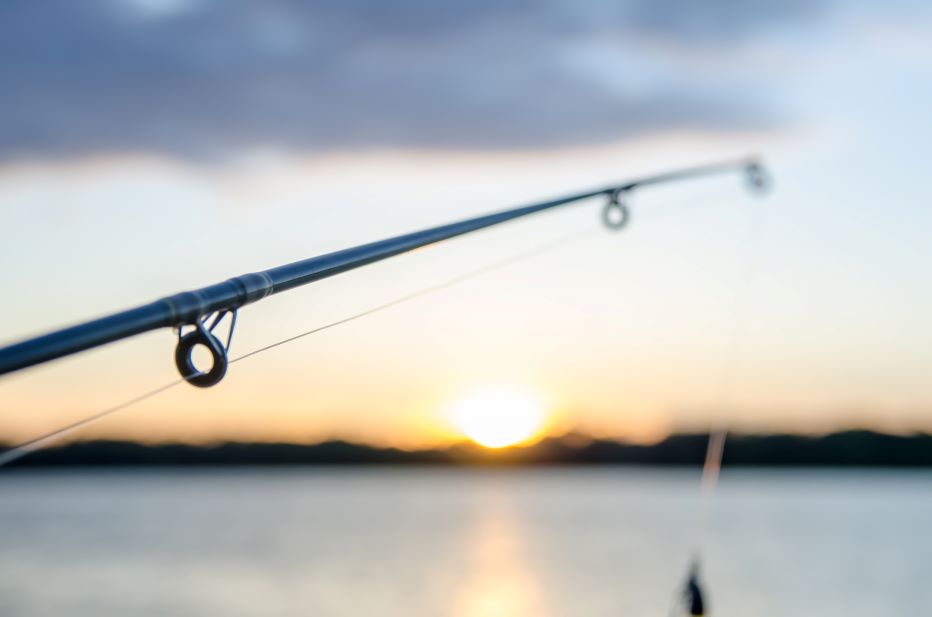What is a Leader in Fishing?
In fishing, a leader refers to a separate length of fishing line that is attached to the end of the main fishing line or the terminal tackle. It is typically made of a different material or a higher strength line compared to the main line. The purpose of using a leader is to provide several benefits, including increased abrasion resistance, reduced visibility, and added strength or shock absorption.
Leaders are commonly used in various fishing scenarios, such as freshwater and saltwater fishing, and can be applied in different fishing techniques. The type and length of the leader may vary depending on the fishing conditions, target species, and angler preferences.
The main functions of a leader in fishing are:
- Abrasion Resistance: The leader acts as a protective barrier between the main line and potential sources of abrasion, such as rocks, coral, or the fish’s teeth. This helps prevent the main line from being damaged or broken during intense fights or encounters with sharp objects.
- Reduced Visibility: Leaders are often designed to have lower visibility in the water compared to the main fishing line. This helps to make the fishing setup less conspicuous, minimizing the chance of spooking wary fish and increasing the likelihood of a successful bite.
- Improved Strength and Shock Absorption: In situations where the main line may not have sufficient strength or shock absorption, such as when targeting larger or more powerful fish, a leader can provide the additional strength needed to handle the fight. Leaders made from materials like fluorocarbon or wire are particularly useful for their higher tensile strength and resistance to abrasion.
- Easy Line Replacement: By using a leader, anglers can quickly and easily replace the leader section without having to re-spool the entire reel. This is particularly beneficial when the leader becomes damaged, worn out, or requires adjustment based on changing fishing conditions.
Leaders can be attached to the main line using various methods, including knots, swivels, or specialized connectors. The choice of knot or connection method depends on the type of line and the specific fishing situation.
Should I Use a Leader When Fishing?
Whether or not to use a leader when fishing depends on several factors, including the target species, fishing conditions, and personal preferences. Here are some considerations to help you decide if using a leader is appropriate for your fishing situation:
- Target Species: Certain fish species have sharp teeth, rough mouths, or abrasive features that can easily damage the main fishing line. In such cases, using a leader can provide an additional layer of protection against abrasion and potential line breakage.
- Clear Water Conditions: In clear water or when targeting wary fish, the visibility of your fishing line can impact your success. Using a leader made of a low-visibility material, such as fluorocarbon, can make your setup less noticeable and increase your chances of enticing bites.
- Line Shyness: In some instances, fish may exhibit line shyness and be less likely to bite if they detect the main fishing line. A leader with a smaller diameter or a different material can help reduce the visibility of the line, increasing your chances of fooling finicky fish.
- Strength and Shock Absorption: If you’re targeting larger or more powerful fish that require added strength and shock absorption, using a leader with a higher tensile strength can help withstand the force of the fight and prevent line breakage.
- Fishing Techniques: Certain fishing techniques, such as trolling or bottom fishing, may benefit from using a leader. The leader can provide added durability, protect against abrasion from rocks or structures, and enhance the presentation of your bait or lure.
Ultimately, the decision to use a leader is a personal choice based on your fishing goals, target species, and the specific conditions you’re facing. Experimenting with and without a leader in different scenarios can help you determine if it makes a noticeable difference in your fishing success.
When setting up a leader on your fishing line, follow these steps:
- Select the Leader Material: Choose a leader material that suits your fishing needs, such as fluorocarbon, monofilament, or wire, based on factors like visibility, strength, and abrasion resistance.
- Determine the Leader Length: Decide on the desired length of the leader based on your fishing conditions and target species. Shorter leaders are typically used for applications where visibility is a concern, while longer leaders may be necessary for situations where abrasion resistance is paramount.
- Attach the Leader to the Main Line: There are various methods to attach the leader to the main line, including tying a knot, using a swivel, or using a specialized connector. The specific method will depend on the type of line and connection you prefer.
- Tie Terminal Tackle: Once the leader is attached to the main line, tie on your preferred terminal tackle, such as hooks, lures, or rigs, to the end of the leader.
Remember to test the strength and reliability of the knot or connection by applying pressure before casting or engaging in a fight with a fish. Regularly inspect the leader for signs of wear or damage, and replace it as needed to maintain its effectiveness.
Overall, using a leader can provide benefits in certain fishing situations, but it is not always necessary. Assess the conditions, target species, and your personal angling goals to make an informed decision on whether to incorporate a leader into your fishing setup.
Types of Leaders on Fishing Line
Monofilament and fluorocarbon leaders are commonly used, but there are other types of leaders available for specific fishing scenarios. These include wire leaders, shock leaders, and tapered leaders.
- Wire Leader: Designed for catching large predatory fish with sharp teeth, wire leaders provide extra strength and durability, minimizing the risk of bite-offs.
- Shock Leader: Used in surf fishing or shore fishing, shock leaders are heavy-duty leaders that absorb the impact of being tossed around in rough water or strong currents without breaking.
- Tapered Leader: Primarily used in fly fishing, tapered leaders have a thin end near the lure or fly, gradually thickening towards the knot. They facilitate precise casting and are particularly useful when using lightweight flies like dry flies.
Leader Strength in Comparison to Main Line
In most cases, the leader is lighter than the main line. However, there are exceptions. If you are fishing near rocks or targeting toothy fish, like northern pike, using a leader that is stronger and heavier than your main line is recommended. Additionally, when targeting larger fish that are likely to put up a strong fight, a stronger leader can provide the necessary strength and control.
Determining Leader Length
Fishing leaders typically range from 26 to 32 inches in length, although the optimal length depends on the fishing conditions and technique.
- Short Leader: Use a shorter leader in water with poor visibility or when you want to enhance the movement of your lure, fly, or bait.
- Long Leader: Opt for a longer leader when surf casting or fishing in shallow, slow-moving, still, or clear water. Longer leaders are also advantageous when using live bait or trolling.
Generally, the clearer the water, the longer the leader should be. Short leaders are typically less than 26 inches, while long leaders measure more than 30 inches.
By considering the type of fishing, water conditions, and target species, you can determine the appropriate leader length and select the right type of leader to optimize your fishing success.
So, What is a Leader in Fishing? In short, a leader in fishing is an additional length of line attached to the end of the main line or terminal tackle. It provides benefits such as abrasion resistance, reduced visibility, and added strength, making it a valuable component in many fishing setups.






